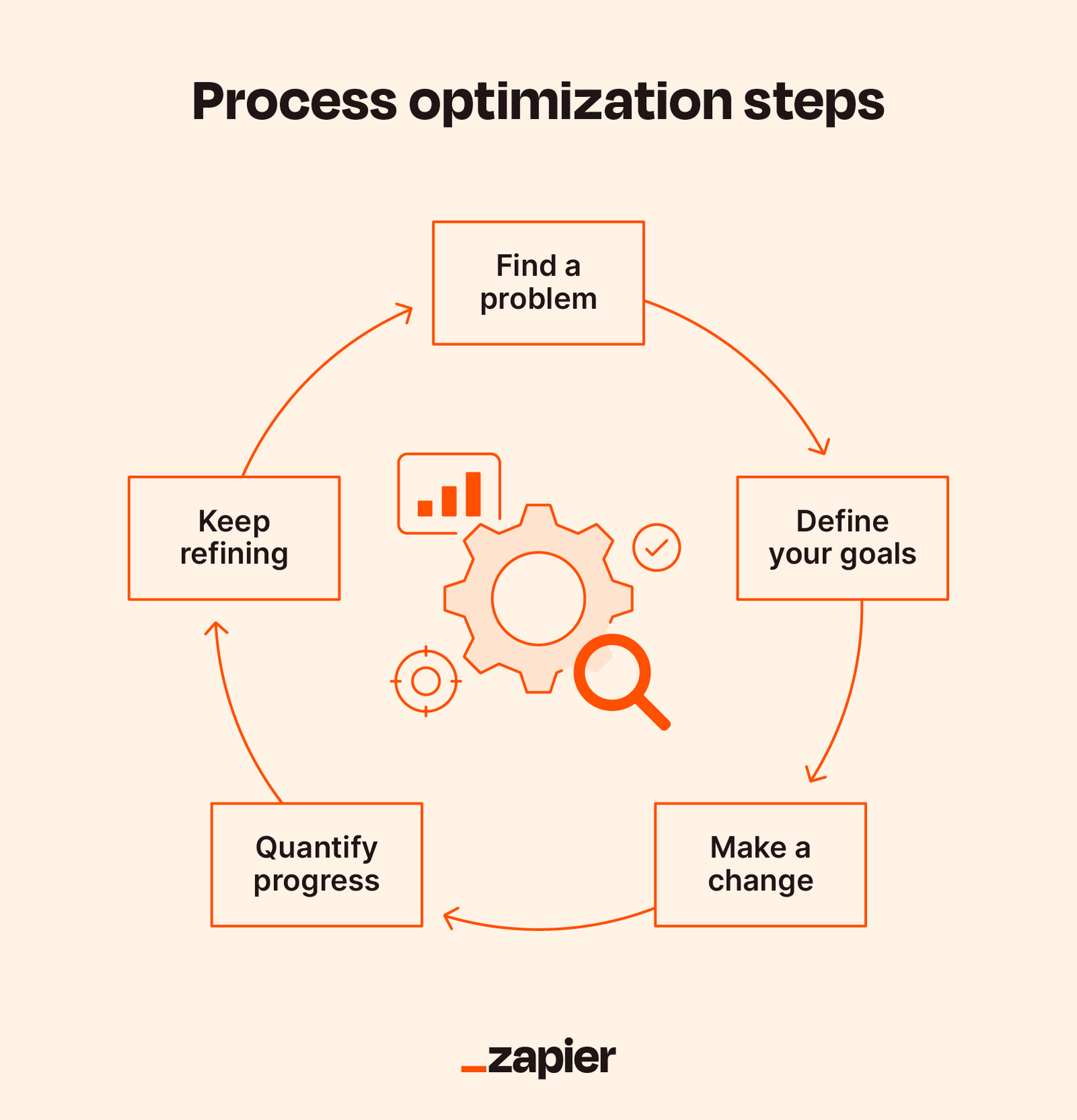
Are you tired of making decisions in your business without having all the necessary information? Looking for a way to improve your decision-making process? Well, look no further! In this article, we will explore the concept of improving decision-making with business optimization models.
Making decisions in business can be challenging, especially when there are multiple factors to consider. However, with the help of business optimization models, you can streamline your decision-making process and make more informed choices. These models use mathematical algorithms and data analysis techniques to identify the best possible solutions for your business challenges. By inputting relevant data and parameters, these models can simulate different scenarios and provide insights into the potential outcomes of each decision. In other words, they help you see the bigger picture and make decisions based on objective analysis rather than intuition alone. So, let’s dive deeper into the world of business optimization models and discover how they can revolutionize your decision-making process.
Improving Decision-making with Business Optimization Models
Business optimization models are powerful tools that can enhance decision-making processes and drive business success. By using mathematical algorithms and data analysis techniques, these models help identify the most efficient and effective strategies for achieving business objectives. They consider various factors, such as resource allocation, demand forecasting, and cost optimization, to provide valuable insights for decision-makers. Implementing such models can lead to optimized operations, improved profitability, and better allocation of resources. With business optimization models, organizations can make informed decisions that drive growth and competitive advantage.

Improving Decision-making with Business Optimization Models
In today’s fast-paced business environment, making informed decisions is crucial for success. However, with the increasing complexity of business operations and the abundance of data, decision-making can be a challenging task. This is where business optimization models come into play. These models use mathematical algorithms to analyze data and provide insights that can help businesses make better decisions.
Business optimization models are powerful tools that can optimize various aspects of a business, from supply chain management to resource allocation. By leveraging these models, organizations can enhance efficiency, reduce costs, and maximize profits. In this article, we will explore the benefits of using business optimization models and how they can improve decision-making in different areas of a business.
The Role of Business Optimization Models in Supply Chain Management
Supply chain management is a critical function for businesses operating in industries with complex logistics and distribution networks. It involves managing the flow of goods and services, from the procurement of raw materials to the delivery of finished products to customers. Business optimization models can play a significant role in optimizing supply chain operations and improving decision-making in this area.
One of the key challenges in supply chain management is balancing inventory levels to ensure sufficient stock availability without incurring excessive holding costs. Business optimization models can analyze historical sales data, demand forecasts, and production capabilities to determine the optimal inventory levels. By doing so, businesses can avoid stockouts and overstocking, leading to improved customer satisfaction and cost savings.
Benefits of Using Business Optimization Models in Supply Chain Management
There are several benefits of using business optimization models in supply chain management:
- Improved inventory management: Business optimization models can help businesses optimize inventory levels, reducing holding costs and improving stock availability.
- Enhanced demand forecasting: By analyzing historical data and market trends, these models can improve the accuracy of demand forecasts, allowing businesses to plan production and procurement more effectively.
- Optimized production scheduling: Business optimization models can optimize production schedules, considering factors such as machine capacity, labor availability, and order deadlines. This ensures efficient utilization of resources and timely delivery of orders.

Optimizing Resource Allocation with Business Optimization Models
Effective resource allocation is crucial for businesses to operate efficiently and achieve their goals. Whether it’s allocating manpower, financial resources, or production capacities, making the right decisions can have a significant impact on outcomes. Business optimization models can help businesses optimize resource allocation and improve decision-making in this area.
For example, in the case of manpower allocation, business optimization models can analyze historical data, employee skills, and project requirements to determine the optimal allocation of resources. By assigning the right people to the right tasks, businesses can improve productivity, reduce costs, and enhance overall performance.
Benefits of Using Business Optimization Models for Resource Allocation
There are several benefits of using business optimization models for resource allocation:
- Improved productivity: By assigning resources optimally, business optimization models can help businesses maximize productivity and achieve better outcomes.
- Cost savings: Optimizing resource allocation can lead to cost savings by reducing unnecessary expenditures and improving resource utilization.
- Enhanced decision-making: Business optimization models provide valuable insights that can guide decision-making, allowing businesses to make informed choices based on data and analysis.
Other Applications of Business Optimization Models
Business optimization models have a wide range of applications beyond supply chain management and resource allocation. They can be used to optimize pricing strategies, marketing campaigns, risk management, and more. These models provide businesses with a systematic and data-driven approach to decision-making, enabling them to achieve their objectives more effectively.
Optimizing Pricing Strategies
Pricing is a critical aspect of any business, as it directly impacts revenue and profitability. Business optimization models can analyze market demand, competitor pricing, and cost structures to determine the optimal pricing strategy. By setting the right prices, businesses can maximize revenue, attract customers, and gain a competitive edge.
Benefits of Optimizing Pricing Strategies with Business Optimization Models
There are several benefits of optimizing pricing strategies with business optimization models:
- Maximized revenue: By setting optimal prices, businesses can maximize their revenue potential and improve their financial performance.
- Competitive advantage: Optimizing pricing strategies can help businesses gain a competitive edge by offering attractive prices to customers while maintaining profitability.
- Improved customer satisfaction: Setting the right prices can enhance customer satisfaction by offering value for money and meeting customer expectations.
Enhancing Marketing Campaigns
Marketing campaigns are essential for businesses to reach their target audience and promote their products or services. Business optimization models can analyze customer data, market trends, and campaign costs to optimize marketing strategies. By identifying the most effective channels, messages, and timing, businesses can improve the ROI of their marketing efforts.
Benefits of Enhancing Marketing Campaigns with Business Optimization Models
There are several benefits of enhancing marketing campaigns with business optimization models:
- Improved ROI: By optimizing marketing strategies, businesses can achieve higher returns on their marketing investments.
- Targeted messaging: Business optimization models can help identify the most effective messages and content to engage and convert customers.
- Optimal resource allocation: These models can allocate marketing budgets optimally across different channels to maximize reach and impact.
Conclusion
Business optimization models are powerful tools that can significantly improve decision-making in various areas of a business. From optimizing supply chain operations to enhancing resource allocation, these models provide valuable insights and guidance for better outcomes. By leveraging the power of data and mathematical algorithms, businesses can make informed decisions, improve efficiency, and achieve their goals more effectively.
Key Takeaways: Improving Decision-making with Business Optimization Models
- Business optimization models help businesses make better decisions.
- They use mathematical algorithms to analyze data and find the best solutions.
- These models can optimize various aspects of a business, such as production, pricing, and resource allocation.
- By using optimization models, businesses can reduce costs, increase efficiency, and maximize profits.
- Decision-making with optimization models requires inputting accurate and relevant data.

Frequently Asked Questions
What are business optimization models and how do they improve decision-making?
Business optimization models are mathematical representations of business processes that help organizations make data-driven decisions. These models use algorithms and optimization techniques to find the best possible solution to a problem or to optimize a specific goal. By utilizing these models, businesses can analyze different scenarios, evaluate potential outcomes, and make informed decisions that maximize efficiency and profitability.
Improving decision-making with business optimization models involves several key steps. First, organizations need to identify the problem or decision they need to address. Then, they gather relevant data and input it into the optimization model. The model then processes the data and generates insights and recommendations. Decision-makers can then use these insights to evaluate different options, assess potential risks and benefits, and ultimately make more informed and objective decisions.
What types of problems can be solved using business optimization models?
Business optimization models can be applied to a wide range of problems and decision-making scenarios. Some common examples include:
- Supply chain optimization: determining the most efficient way to manage inventory, logistics, and distribution
- Production planning: optimizing production schedules, resource allocation, and capacity utilization
- Inventory management: minimizing inventory costs while ensuring sufficient stock levels
- Scheduling and routing: optimizing routes for delivery or transportation to minimize time and costs
- Staffing and workforce planning: determining the optimal number of employees and their schedules
These are just a few examples, and business optimization models can be customized to address specific challenges and goals in various industries and sectors.
What are the benefits of using business optimization models for decision-making?
There are several benefits to using business optimization models for decision-making:
- Improved efficiency: Optimization models help identify the most efficient solutions, eliminating unnecessary costs and reducing waste.
- Increased profitability: By optimizing processes and resources, organizations can maximize their profitability and revenue.
- Objective decision-making: Optimization models provide data-driven insights, reducing the influence of biases and personal opinions in decision-making.
- Risk assessment: By analyzing different scenarios, optimization models can help identify potential risks and evaluate their impact on the decision.
- Strategic planning: Business optimization models enable organizations to evaluate different strategies and make informed decisions that align with their long-term goals.
Overall, using optimization models can lead to more effective and informed decision-making, resulting in better outcomes for businesses.
What are some challenges in implementing business optimization models?
Implementing business optimization models can come with certain challenges that organizations need to be aware of:
- Data availability and quality: Optimization models rely on accurate and reliable data. Ensuring data availability and quality can be a challenge, especially if the data is scattered across different systems or departments.
- Model complexity: Building and implementing optimization models can be complex, requiring expertise in mathematical modeling and optimization techniques.
- Resistance to change: Introducing optimization models may face resistance from employees who are accustomed to traditional decision-making approaches.
- Integration with existing systems: Integrating optimization models with existing business systems and processes can be a technical challenge that requires careful planning and coordination.
- Continuous improvement: Optimization models need to be regularly updated and refined to adapt to changing business conditions and goals.
Despite these challenges, organizations that successfully implement business optimization models can benefit greatly from improved decision-making and operational efficiency.
How can businesses get started with implementing business optimization models?
Getting started with implementing business optimization models involves several key steps:
- Identify the problem or decision that needs to be addressed and determine if it can be solved using optimization models.
- Gather relevant data and ensure its accuracy and completeness.
- Engage experts in mathematical modeling and optimization techniques to develop the appropriate model for the problem.
- Validate and test the model using historical data or simulated scenarios to ensure its accuracy and reliability.
- Integrate the model into existing business systems and processes, ensuring smooth implementation and adoption.
- Provide training and support to employees who will be using the model for decision-making.
- Monitor and evaluate the performance of the optimization model, making necessary adjustments and improvements.
By following these steps and working closely with experts, businesses can successfully implement business optimization models and enhance their decision-making processes.

Final Summary: Unlocking Success with Business Optimization Models
In today’s fast-paced and ever-changing business landscape, making informed decisions is crucial for success. That’s where business optimization models come into play, providing a powerful tool to improve decision-making processes. By leveraging data, analytics, and advanced algorithms, these models enable organizations to analyze various scenarios, optimize resources, and maximize efficiency. The benefits are undeniable, from enhancing profitability to streamlining operations and staying one step ahead of the competition.
Implementing business optimization models can revolutionize the way organizations operate. With the ability to simulate different scenarios and predict outcomes, decision-makers gain valuable insights into the potential impact of their choices. This empowers them to make informed decisions based on data-driven evidence rather than relying solely on intuition or guesswork. By optimizing processes, allocating resources effectively, and minimizing risks, businesses can improve profitability and achieve sustainable growth.
Moreover, business optimization models offer a competitive advantage by enabling organizations to adapt to changing market conditions quickly. These models can help identify bottlenecks, inefficiencies, and areas for improvement, allowing businesses to take proactive measures and stay agile in an ever-evolving landscape. By harnessing the power of data and analytics, organizations can make smarter decisions, optimize performance, and unlock their full potential.
In conclusion, by embracing business optimization models, organizations can transform their decision-making processes and drive success in today’s competitive business environment. With the ability to leverage data, analytics, and advanced algorithms, these models empower businesses to make informed choices, optimize resources, and stay ahead of the curve. It’s time to unlock the potential of business optimization models and pave the way for a brighter, more prosperous future.